5 things you need to know about owning Nigerian Dwarf goats
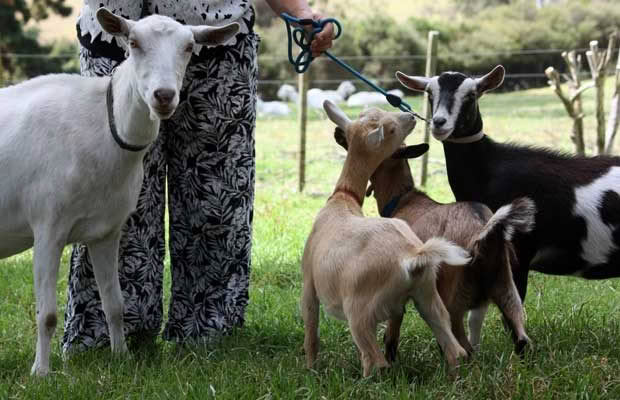
They’re very cute, very smart, and very small, with big milking stats.
Words & images: Nadene Hall
Goat breeder Paula Levett has had long-legged, elegant milking Saanens for more than 25 years, but her new favourite breed is a step down.
The tiny Nigerian Dwarf grows to about 60% of the height and weight of the average Saanan. We met the first-ever purebred Nigerian Dwarf goats a couple of years ago. Their owner, Fiona Casey, is producing purebred goats which command a high price.
Paula and colleagues from the NZ Dairy Goat Breeder’s Association are taking a different approach to fit their smaller budget. They pooled their resources to buy Nigerian Dwarf bucks from a reputable dairy goat breeder in Australia.
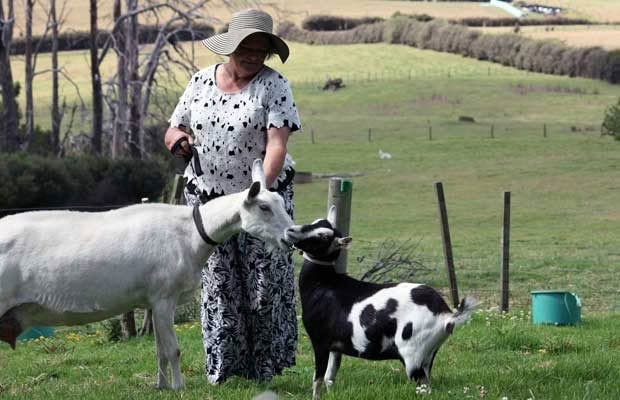
Tirimasu, a standard-sized Saanen doe (2.5 years) who measures 90cm high at the shoulder; Nigerian Dwarf-cross Joy (1.5 years) is 57cm high at the shoulder and won’t get much higher.
“We couldn’t afford to bring in purebreds,” says Paula. “So we’re ‘breeding up’ – or down, sizewise – using our bucks and mating them with standard-height dairy goats and some smaller breed goats.”
READ MORE Introducing New Zealand’s newest and tiniest breed of dwarf goats
This process is used by cattle, sheep, and goat breeders to upgrade a breed’s bloodlines. Careful selection of stock means after five generations, the group will create a NZ version of the Nigerian Dwarf. It will have the same height, weight, and production values as the original US breed – 57-60cm high, weighing around 35kg – but the cost to buy them will be much more affordable.
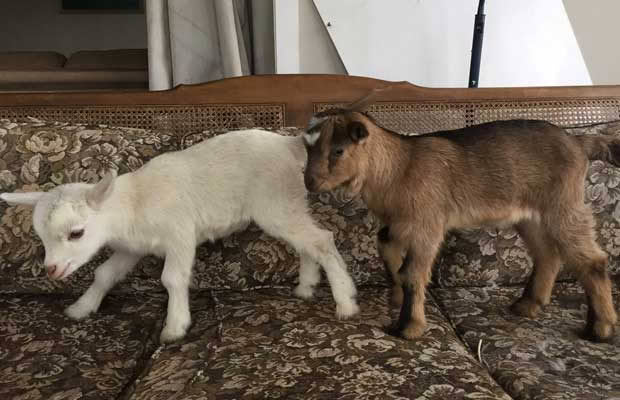
Paula says they’re only a couple of generations into what’s technically called a ‘grading up’ programme and they’re already getting great results. Joy is one of Paula’s cross-bred does. She’s 75% Nigerian Dwarf, and the balance is a mix of standard-sized Australian dairy goat breeds (Australian Brown and Australian Alpine).
At 18 months, she’s just 57cm high at the shoulder (the official measuring height for goats) and Paula expects she’ll only get a few centimetres taller.

The NZ Nigerian Dwarf Dairy Goat Association is keen to encourage people to take part in their breeding programme so more people can enjoy the delightful little goats as pets, and for milking. Here’s what you need to know.
1. They’re personality-plus
They say never work with animals, but Tiramisu the Saanan stands quietly beside Paula to have her photo taken. Joy is very ‘Nigerian Dwarf’ in her approach, and typical of Paula’s experience with the breed so far.
“They’re fascinating, they’re so full of personality. I’ve found them quite different to your standard dairy goat, so curious, a bit adventurous. To be fair, most of our (Nigerian Dwarf) goats are younger (under 18 months), and they may lose some of that as they get older. Saanens are the same when they’re kids but they get over it when they’re about a year old and are more interested in eating grass.”
The Nigerians’ small size means it’s also tempting to bring them indoors, and even these experienced breeders admit they succumb to their very high cute factor.
“They’re so cute when they’re little, running into the house and sitting on the couch.”
2. But you’ll need to be firm
Their tiny size and cute personalities make them easy to manage when they’re small. But if a tiny goat kid learns to squeeze its way through a fence and run into the house, you’re training it to do the same thing when it’s older.
It’s important to ensure goats learn that fences are to be respected, and they’re not permanent houseguests.
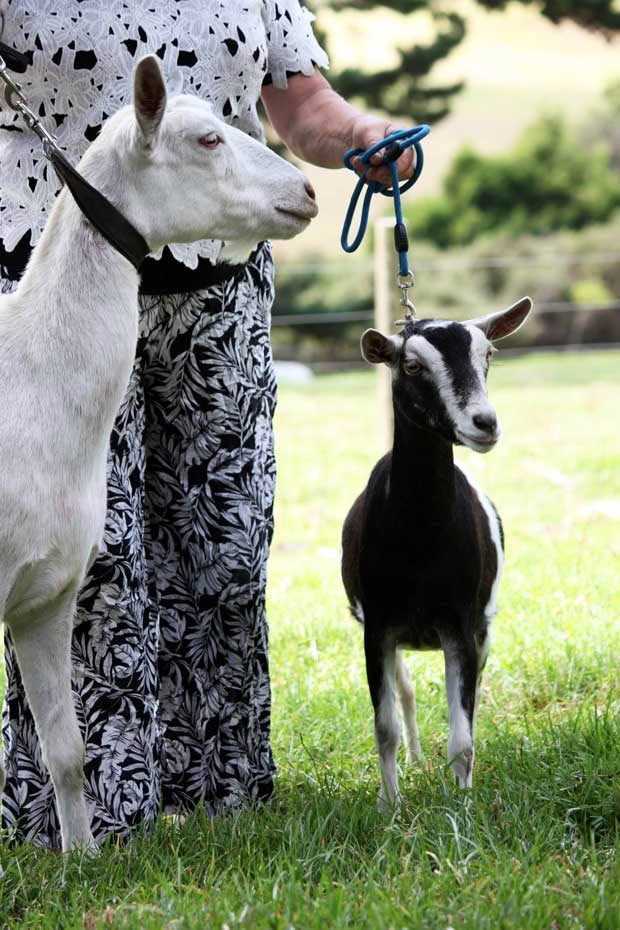
3. You’ll probably need to upgrade your fences
Paula’s block has standard 8-wire fencing. She uses pens made from concrete reinforcing mesh to contain kids under 12 weeks. It’s cheap to buy, easy to move around, and the pen doesn’t need to be big because they don’t need a large area of pasture.
“It’s sort of like trying to fence in cats when they’re kids and so small.”
Paula has reinforced the lower half of a couple of paddocks with chicken mesh to stop them pushing through. The odd one has figured out it can climb up lower wires and heave itself over a standard-height fence, so Paula uses an electric wire on a short outrigger to prevent any attempts. In a couple of places where her older fences aren’t quite up to scratch, she’s used reinforcing mesh panels to patch a few gaps.
“If you make it about 1.3m high, they run out of climbing ability because they’re so short.”
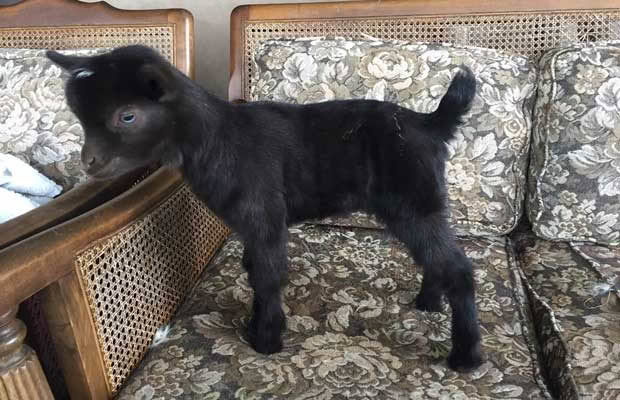
4. They are the perfect goat for the home cheesemaker
The Nigerian Dwarf is a high-quality dairy goat, producing high milk solids and a manageable amount of milk. A well-fed doe can milk 1-2.8 litres per day. The upper range would be from a well-fed mature doe, being milked twice a day.
“The milkfat percentage is approximately double what a Saanen might produce, and the protein is 35% more.”
For a cheesemaker, it means you need less milk but you’ll still get the same amount of cheese. Some people need to either store milk or make cheese several times a week, but the smaller, richer amounts from a Nigerian Dwarf would mean it could be done just once or twice.
Their small size is also a bonus for those who may find larger milking breeds such as Saanens and Anglo-Nubians harder to handle due to their height and weight.
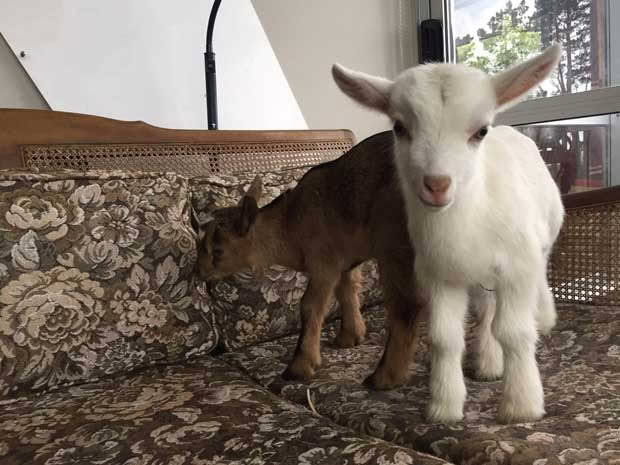
5. New breeders are required
Paula and the other Nigerian Dwarf breeders are based around Auckland. They have more than 120 years of combined experience breeding and caring for goats, and they’re more than happy to help people new to goats get set up. Commercial transport is available to all areas of New Zealand for kids over 10 days old.
“We have no trouble homing the little ones – everyone wants young and cute – but when it comes to breeding stock, it’s stalled a wee bit. We know that a lot of interested people will be complete goat novices, and we’re happy to explain the basics to them, go through the breeding options, what we’re trying to achieve and how it works.”
People new to the technicalities of breeding can get confused by the terminology, but Paula says they’ll explain how everything works.
“People want the cutest, smallest little goat they can have, but there’s no future for these goats if more people aren’t prepared to breed them. We’ll need to establish the breed in New Zealand before we can spend more money (on new genetics) because importing is an expensive exercise.”
Goat care includes good housing, regular foot trimming, vaccinations, drenching, and good pasture management to maintain milk production and keep the parasite burden low. Goats live 8-12 years, and you need at least two as single goats get very lonely and will have behavioral issues.

READ MORE
NZ Nigerian Dwarf Dairy Goat Association
Follow the NZ Nigerian Dairy Goat Association on Facebook
http://www.nigeriandwarf.co.nz/
 This article first appeared in NZ Lifestyle Block Magazine.
This article first appeared in NZ Lifestyle Block Magazine.
